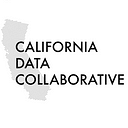Requirements for CII Customers under CA’s Water Efficiency Framework
DWR’s 1/25/22 Workshop Outlined Draft Proposals
On January 25th, 2022 the California Department of Water Resources (DWR) hosted what could be the last in a series of workshops outlining their proposed guidelines for the standards and methodologies used to implement the state’s water use efficiency legislation.
The majority of the workshops have thus far focused on topics related to calculating the water use objective (WUO) that urban water supply agencies will need to comply with. In contrast, this workshop dove deep into a number of auxiliary requirements for commercial, industrial, and institutional (CII) water users. In some ways, these requirements feel a bit like “add-ons” because they are designed to cover sectors not included in the WUO. In practice, however, complying with these CII requirements may end up being even more resource-intensive than calculating and reporting the WUO.
DWR is requesting comments on the proposals by the end of the day on February 8th, 2022. After that, it is expected that they will be submitting their proposals to the State Water Resources Control Board (SWRCB) without too many additional changes. While this is in some ways the end of an epic multi-year legislative implementation journey, it is also just a breather before the SWRCB begins its rulemaking process (during which further changes might be expected).
If you would like to read the full proposals, they are available on DWR’s Sharepoint site, or via CalWEP.
Measuring Landscape Area
One of the major actions agencies will need to undertake is the measurement of many of their CII landscapes.
- All landscapes irrigated by a dedicated irrigation meter (DIM) will need to be measured and reported so that agencies can calculate landscape area-based WUOs.
- CII landscapes irrigated by a mixed-use meter (MUM) will need to be measured to determine if their total irrigated area is likely to meet or exceed one acre.
One acre is 43,560 ft² — a substantial increase from the 20,000 ft² threshold previously proposed in November 2021. This change may have been driven by the stakeholder feedback that DWR received, such as the research memo on the economic feasibility of CII DIM installation written by CalWEP and the CaDC.
From an implementation perspective, it seems reasonable that MUMs irrigating an area clearly less than an acre probably don’t need to be measured in great detail. Those closer to the one-acre threshold, however, will need to be measured to determine whether additional action is necessary. One could argue that the same logic applies to landscapes that are clearly larger than the threshold, except that these measurements have values beyond the binary “yes/no” for exceeding the threshold. In particular, the measurements can be used to generate water budgets as part of an “in-lieu technologies” approach.
Meter Splitting and In-Lieu Technologies
If a MUM is irrigating a landscape greater than one acre in size, agencies must take additional action to ensure compliance. Agencies in this position have a few options:
- Convert the landscape irrigation portion of a MUM to a dedicated irrigation account using a CII-DIM or equivalent technology. Afterward, this irrigation water use will be reported as part of the annual water use against the WUO.
- Reduce the landscape area below the threshold (e.g. through turf replacement with non-irrigated landscaping).
- Use in-lieu technology to demonstrate improvement in water use efficiency.
Converting to a DIM or Equivalent Technology
Whether or not to split the meter and install a DIM is a complex choice that requires consideration of the characteristics of each individual agency and account. Still, there are many situations in which meter splitting is likely to not be a cost-effective approach.
Reducing Landscape Area
Reducing landscape area might be feasible in some situations — especially if a landscape is only slightly larger than the threshold. However, it will require cooperation from the account owner and involve all the complexities of a standard turf replacement operation, plus the requirement to install only non-irrigated landcover as a replacement.
In-Lieu Technologies
The most flexible route is to implement one of the proposed in-lieu technologies. For very large landscapes not amenable to reducing landscape area, or landscapes with very complex irrigation systems not amenable to DIM conversion, this may be the only option that makes sense.
Though it provides flexibility, all of the in-lieu approaches must satisfy the following criteria:
- They should not be a direct measurement of landscape water use to the accuracy and reporting required for technology functionally equivalent to a DIM.
- The technology is demonstrated to improve water use efficiency at the applied landscapes.
Furthermore, in-lieu technology programs require the implementation of landscape best-management practices (BMPs) around communications, irrigation system maintenance, and irrigation scheduling.
DWR provides several examples of technologies that they deem satisfactory. These include:
- Water budget-based rate structures
- Water budget-based management (without a water budget-based rate structure)
- Hardware improvements with enhanced performance and function
- Remote sensing for irrigation management combined with other available information
- Others that meet the burden of proof to be qualified in-lieu technologies
Agencies that already make use of water budget-based rates have an advantage here, though there are sub-requirements for the rate-based approach that could be tricky, such as setting the indoor portion of the budget in a way that DWR deems acceptable.
Water budget-based management could be a useful option for many agencies. It doesn’t require a complete rate overhaul, and also requires minimal additional cooperation from account owners (outside of the implementation of the 3 BMPs mentioned above). The principal need for agencies here is an appropriate technology solution that can calculate these budgets and enable communication with customers.
The hardware improvement option could also be appealing. One path that DWR mentions is the use of AMI with indoor/outdoor disaggregation, which could be a relatively easy compliance path for agencies with AMI meters. They also call out smart irrigation controllers, sprinkler nozzles, etc. These are well-known technologies for most water efficiency practitioners, but installing and maintaining them will require a higher degree of cooperation from account owners. Additional information from DWR would be helpful to clarify how much water an intervention needs to save to be considered acceptable.
The last option that DWR explicitly calls out is the use of remote sensing. This remote sensing, however, can’t be used purely for measurement, but instead needs to be combined with other data or approaches to save water. I am not quite sure what they had in mind when drafting this example, but it sounds like the use of a technology like Open ET to estimate evapotranspiration would be insufficient by itself and would need to be used as part of a water budgeting or communication system to encourage water savings. Another interpretation would be that a technology like drone flyovers to assess irrigation efficiency (e.g. looking for overwatering) could be acceptable if it resulted in irrigation system improvements or otherwise reduced irrigation.
Classifying Customers
DWR has previously discussed their proposal that agencies classify all of their CII customers according to a not-yet-finalized classification scheme. This will need to be accomplished within 5 years of a future start date.
A new piece of information provided during the January 25th workshop is that they would like to see the classification system integrate with the broader set of proposed CII BMPs.
CII BMPs
DWR is proposing a requirement for agencies to report annually on their implementation of a number of CII-BMPs. They recommend 5 categories of CII-BMPs including education and outreach, incentive programs, landscape practices, collaboration and coordination, and operational changes.
These BMPs should ideally be customized to each agency to target customer categories present in the top 20% of CII water users, as well as the top 2.5% of individual CII water users. Customers with high use of process water (e.g. >80% process water) are excluded from this list.
A full research report on CII-BMPs is forthcoming from Maddaus Water Management.
IMPORTANT NOTE: The comments above reflect my interpretation of the materials presented by DWR and should not be considered legal advice. The California Data Collaborative does not represent and is not employed by the DWR in any capacity. All decisions regarding how to comply with the regulations should be based on the guidelines that are ultimately approved by the State Water Resources Control Board.

